This article highlights some real-life examples of stimulus generalization in Applied Behavior Analysis (ABA) therapy, specifically tailored for parents eager to support their children in applying learned skills across different environments. By reinforcing these skills in everyday situations—like social interactions at home or out in public—parents can truly make a difference. This approach not only enhances their children's ability to generalize those skills but also fosters independence and boosts their overall quality of life.
Let’s explore this together! Imagine your child practicing their conversation skills during a family dinner or while playing at the park. These moments are golden opportunities for learning! By encouraging these interactions, you’re helping your child transfer their skills from one setting to another, which is key to their development.
We’re here to help you every step of the way! Remember, every small reinforcement in daily life contributes to a larger goal of independence. So, keep those interactions flowing and watch your child thrive!
Understanding the nuances of stimulus generalization in Applied Behavior Analysis (ABA) therapy can truly be a game-changer for parents navigating the complexities of their children's learning journeys. This concept not only empowers children to apply skills learned in therapy across various settings but also fosters independence and enhances social interactions. But how can parents effectively support this process and ensure their children thrive in diverse environments?
Let’s dive into practical examples and strategies that illustrate the importance of stimulus generalization. These insights can transform everyday parenting and reinforce the skills that children with autism develop through ABA therapy. We’re here to help you every step of the way!
At Rori Behavioral Innovations Inc., we understand the challenges that parents face when helping their children develop new skills. Our approach to a stimulus generalization example aba in ABA practices allows children to transfer what they've learned to different settings, making it easier for them to use these abilities in everyday life. 🌟
Generalization in ABA is so important! It ensures that the skills acquired during therapy aren’t just for the clinic but can be applied at home and in the community. By focusing on practical situations, Rori Care empowers parents to reinforce these skills at home, creating a nurturing environment that supports their child's growth.
The stimulus generalization example aba demonstrates that the ability to generalize skills is crucial for fostering independence and enhancing social interactions. It equips young individuals with the confidence to navigate various situations. As experts in the field say, "The capacity to apply techniques across settings represents one of the most significant advantages of ABA therapy for individuals with autism."
Using not only helps with skill retention but also significantly improves the quality of life for individuals with autism. For instance, kids who practice their skills in different environments tend to be more adaptable and flexible, which are key traits for thriving in social situations.
Additionally, Natural Environment Training (NET) emphasizes learning through everyday activities, which boosts effective application strategies. At Rori Behavioral Innovations Inc., we're committed to making these transformative outcomes accessible for everyone. Let’s explore this journey together and ensure that every child has the chance to flourish!
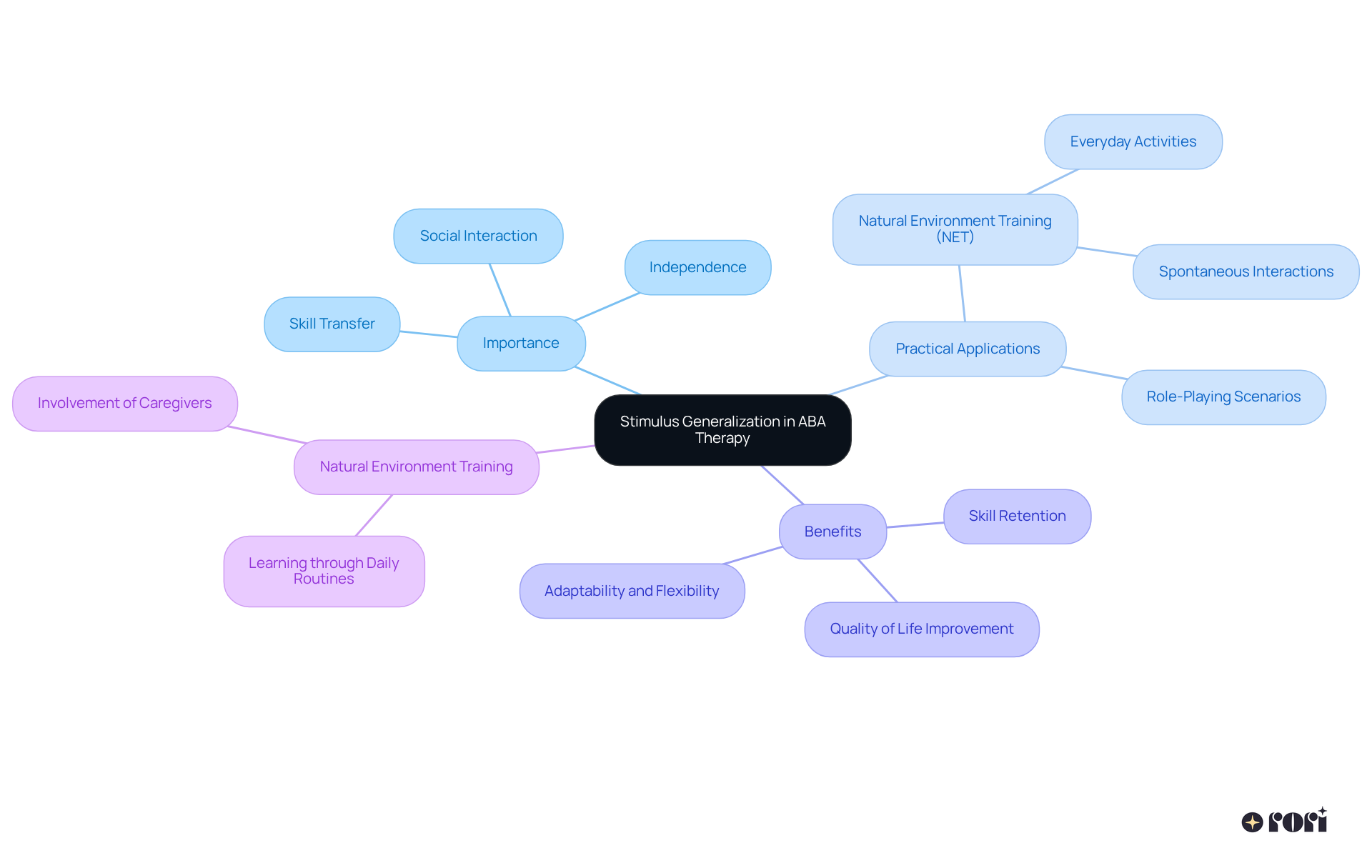
The Little Albert experiment, conducted by John B. Watson, is a fascinating study that helps us understand emotional responses and how they can generalize. In this groundbreaking research, a young child learned to fear a white rat after it was paired with a loud, frightening noise. This fear didn't just stop with the rat; it spread to other similar things, like a rabbit and even a fur coat! This illustrates a [stimulus generalization example ABA](https://rori.care/post/what-is-an-sd-in-aba-therapy-a-complete-tutorial-on-discriminative-stimuli), highlighting how learned behaviors can extend beyond their original context.
For parents, this phenomenon is a gentle reminder of the importance of managing emotional reactions in kids undergoing ABA treatment. An example of stimulus generalization in ABA is how emotional conditioning can greatly influence how young individuals generalize their learned behaviors. So, it’s crucial for caregivers to foster positive emotional experiences during therapy. Did you know that research shows 66% of youth who started ABA services stayed for at least 12 months? This really emphasizes the importance of emotional management in keeping kids engaged.
As specialists often say, 'A stimulus generalization example ABA is essential for individuals with autism spectrum disorder (ASD) as it fosters the capability to execute acquired abilities independently across various settings.' By understanding the effects of emotional conditioning and the challenges to transfer—like stimulus overselectivity and lack of motivation—parents can better support their children in applying their skills in different situations. This ultimately . Let’s explore this together!
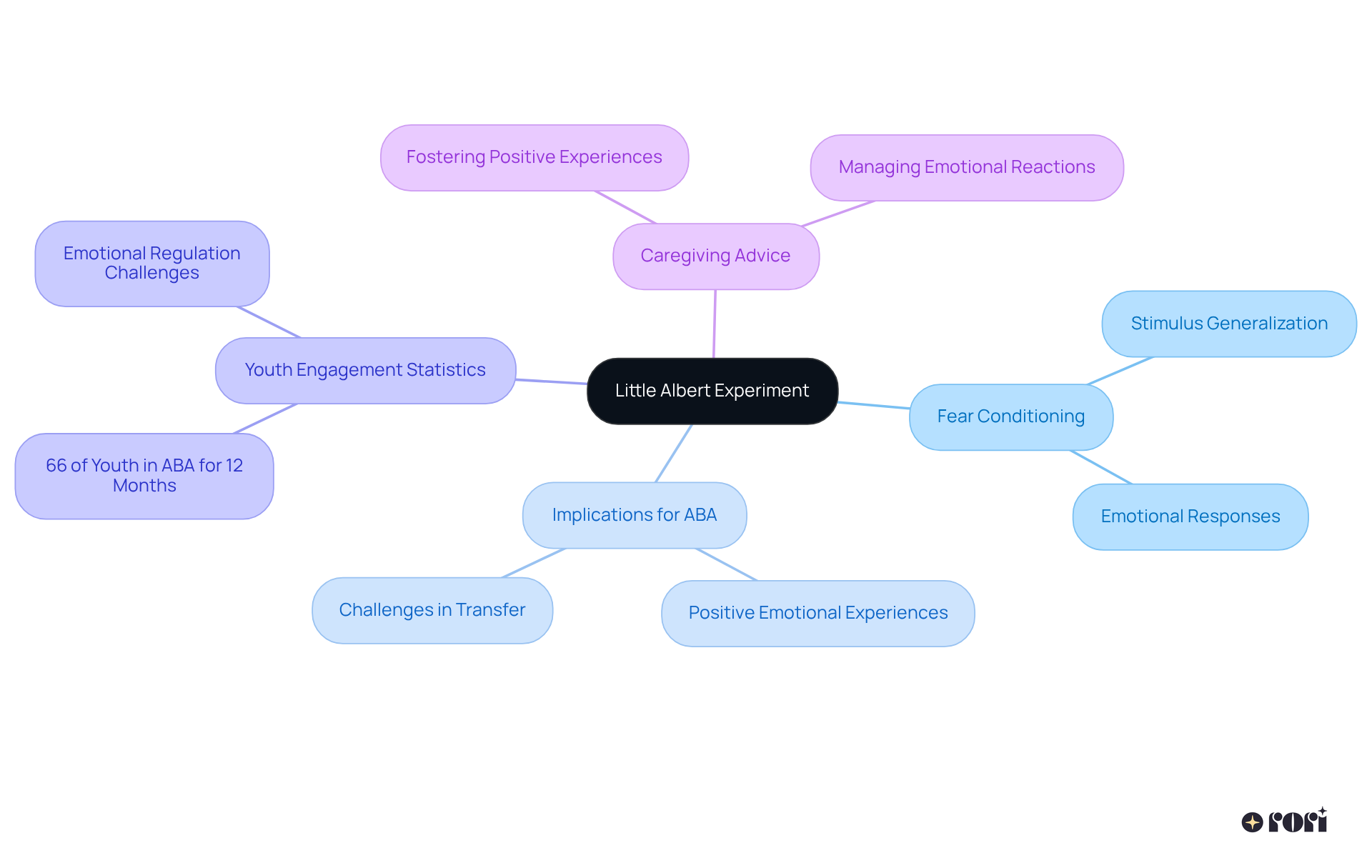
Pavlov's dogs are a great example of how stimulus transfer works! They learned to salivate not just at the sound of a bell, but also to similar sounds. This classic conditioning experiment shows us how behaviors can extend to related stimuli. In the world of Applied Behavior Analysis (ABA), understanding a stimulus generalization example ABA is super important for helping young individuals respond appropriately to different signals around them.
By using a stimulus generalization example aba, therapists can help kids apply their skills in various settings. Imagine a young person who learns to ask for help during a therapy session. They can then use that same ability in a classroom or at home, improving their social interactions and overall quality of life. Plus, studies suggest that broadening perspectives can enhance flexibility in behavior and thought for individuals with Autism Spectrum Disorder (ASD). This can help by easing anxiety related to new experiences.
As behavior analyst John B. Watson wisely said, 'The ability to generalize is fundamental for adaptive functioning.' Parents can play a big role in this process! By creating opportunities for their kids to practice skills in different environments, they highlight the importance of applying what they’ve learned in everyday routines. Let’s explore this together and see how we can support our kids in becoming more independent and flexible!
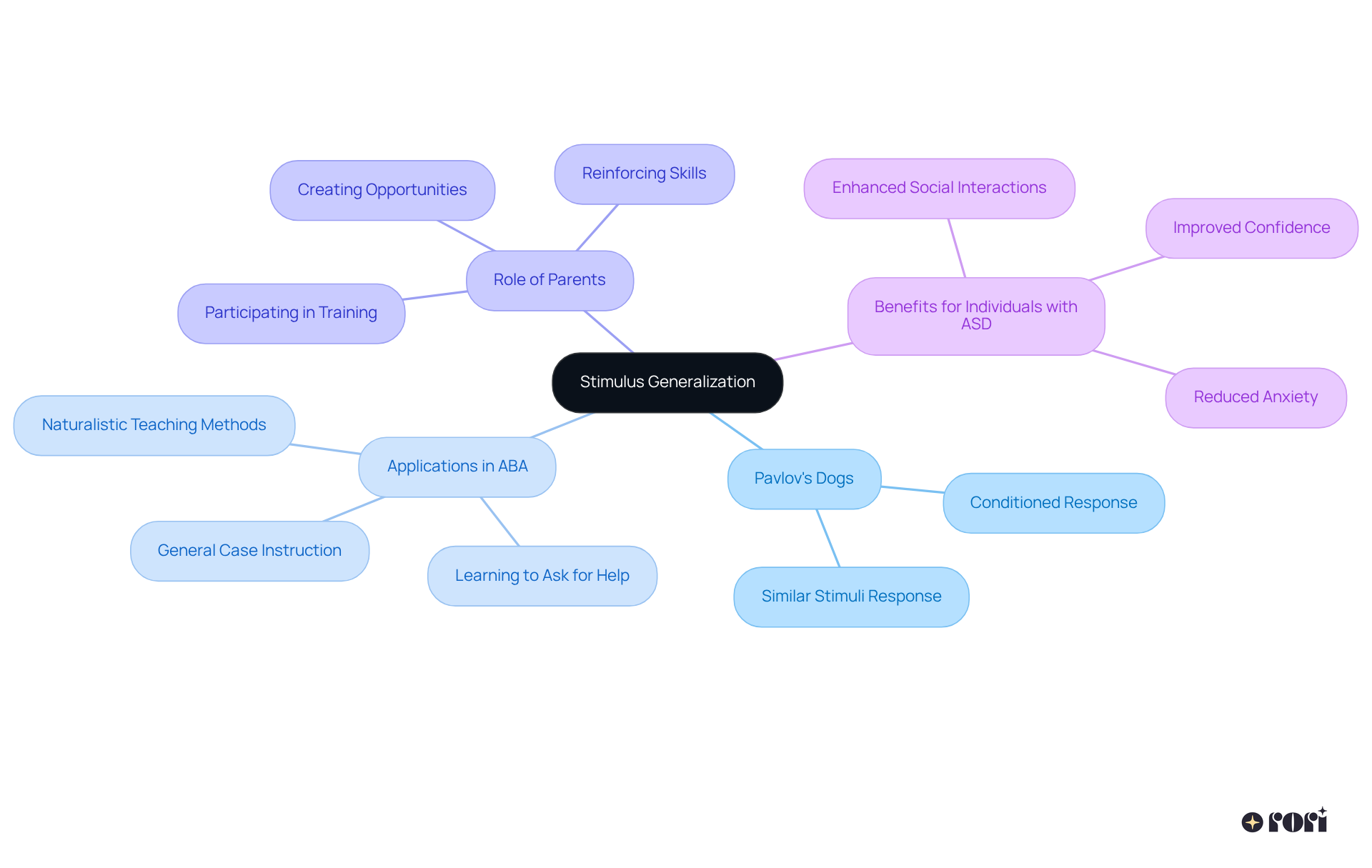
Children with PTSD often show generalized fear responses, feeling anxious or scared when faced with reminders of their traumatic experiences. This can make therapy challenging, as it might affect a young person's ability to learn and socialize. For instance, a child who experienced trauma in a specific setting may feel uneasy in similar environments, even when they are safe. Understanding this is essential for both parents and therapists, as it helps in for healing and learning.
Creating a safe environment is so important! Therapists often emphasize the need for a consistent routine and a calming atmosphere, which can help young people feel secure and reduce anxiety. Techniques like gradually introducing feared stimuli, paired with positive reinforcement, can be effective during therapy sessions. As Dr. Seth D. Norrholm notes, "These associations remained significant after excluding minors with moderate signs of puberty from analyses," highlighting the need for tailored strategies based on each child's unique situation. Plus, incorporating play and creative activities can foster communication and expression, allowing kids to process their experiences in a gentle way.
The effects of trauma on learning and social interactions are significant. Children might find it tough to concentrate, remember things, or pick up on social cues, which can impact their school performance and friendships. It's estimated that 2.3% of school-aged youth experience PTSD, with those diagnosed with autism having an adjusted odds ratio of 7.1 and those with ADHD at 10.7 for developing PTSD. By recognizing these challenges, parents can team up with therapists to implement strategies that cater to their children's learning needs while addressing trauma-related behaviors. This holistic approach serves as a stimulus generalization example in ABA, as it not only helps in managing generalized trauma reactions but also fosters resilience and nurtures a sense of normalcy in a young person's everyday life. Let’s explore this together!
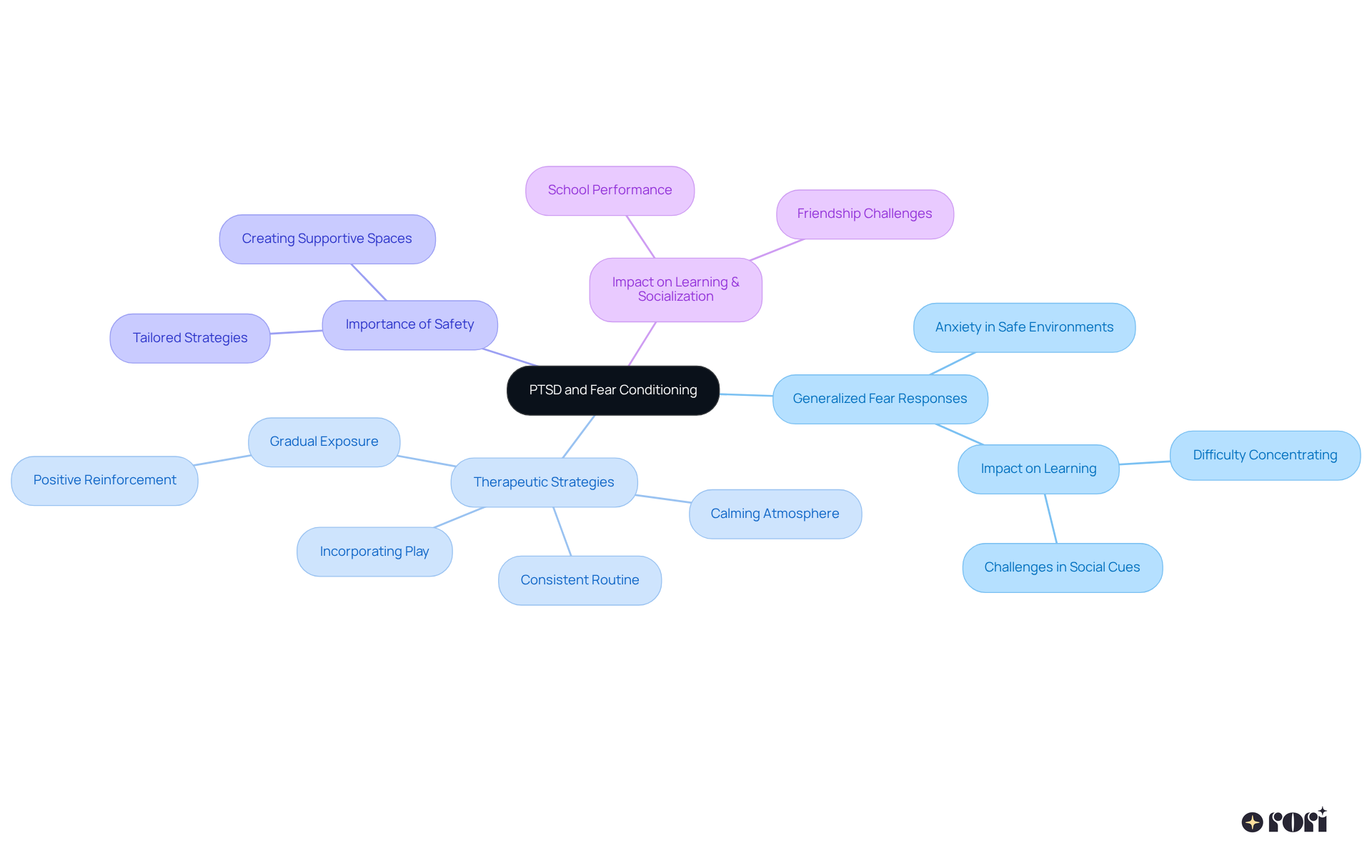
Parents play a vital role in promoting a stimulus generalization example aba by seamlessly weaving acquired skills into their children's daily lives. For instance, when a child learns to greet others during sessions, parents can encourage them to practice this skill in various places—whether at home, in the park, or during family gatherings. This approach not only reinforces the behavior but also helps the child adapt to .
To really make the most of ABA therapy, consistent reinforcement is key! Parents should offer encouraging words whenever their child successfully uses a learned skill in a new setting. Moreover, using different practice scenarios acts as a stimulus generalization example aba, enhancing the child’s ability to generalize skills across various situations and increasing the likelihood that they will apply these skills in real-life interactions.
There are so many successful stimulus generalization example aba of parents effectively using generalization techniques at home. For example, a parent might set up playdates where their child can practice social greetings with friends, reinforcing the behavior in a natural environment. These practical experiences not only build confidence but also enhance social skills, contributing to the overall growth of the young individual.
Experts in youth development emphasize the importance of applying skills in everyday situations. One expert shared, "The way we communicate with our children becomes their inner voice," highlighting how regular practice and positive reinforcement can shape behavior. It’s also important to understand the unique challenges faced by parents of children with autism, as these challenges can impact both parental well-being and behavior. By actively engaging in their child's learning journey, parents can create an environment that nurtures skill application, ultimately leading to better outcomes for children with autism. Let’s explore this together!
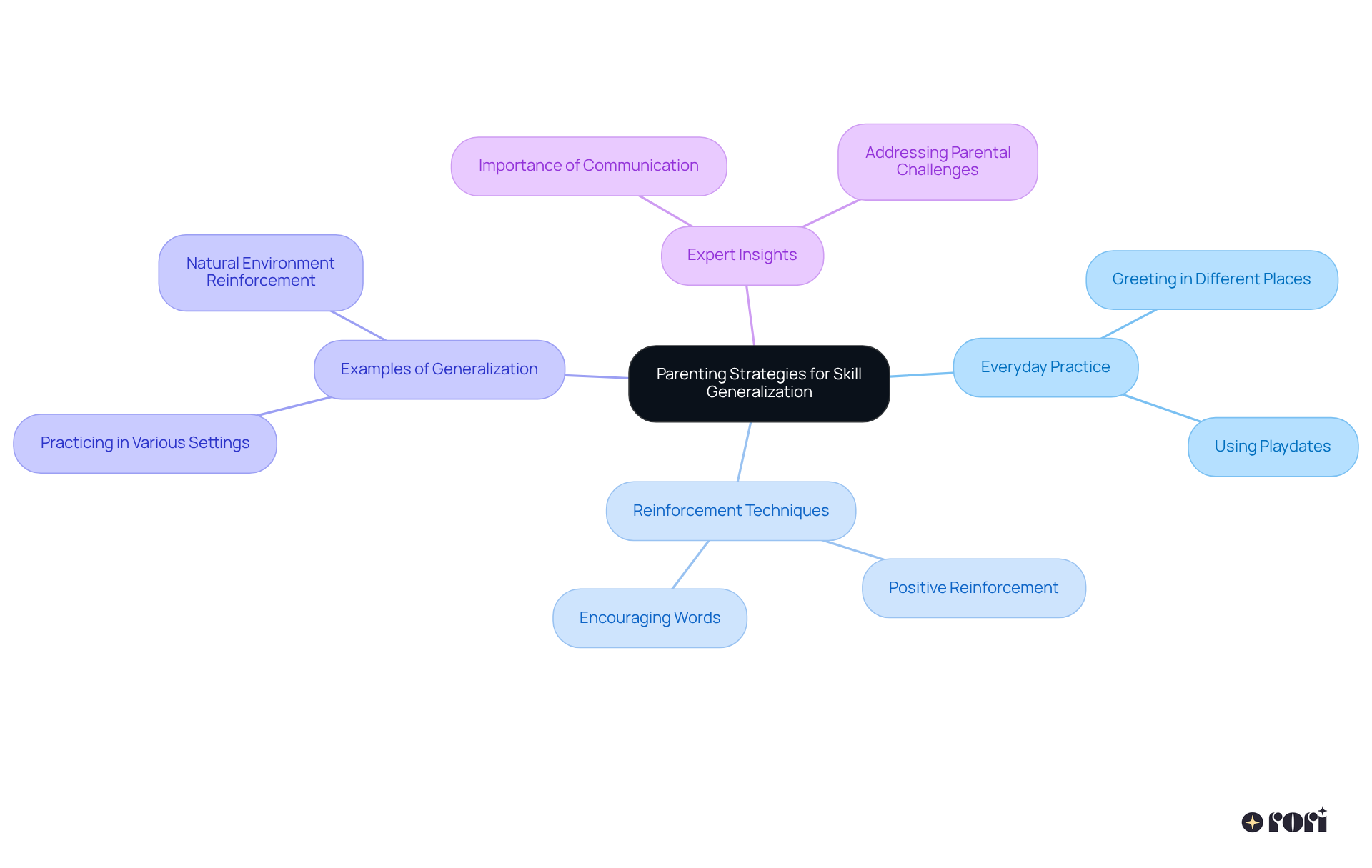
Look-alike packaging serves as a fascinating stimulus generalization example aba in marketing. It’s where consumers might accidentally associate similar products just because of their packaging design. This tactic takes advantage of the good feelings people already have about a brand, nudging them to explore new products. Interestingly, did you know that 81% of consumers want sustainable packaging? Many will steer clear of items that come in harmful materials, showing just how crucial packaging is in our choices.
For parents, understanding this concept is vital. It sheds light on how a stimulus generalization example aba can influence their children’s learning and behavior. By recognizing these marketing strategies, parents can navigate the options available for their kids more effectively, promoting a thoughtful decision-making process. As Jeff Bezos wisely said, 'a brand for a company is like a reputation for a person.' This highlights how essential trust is in branding.
This understanding can empower parents to make choices that reflect their values and . Let’s explore this together and see how we can make informed decisions that benefit our families!
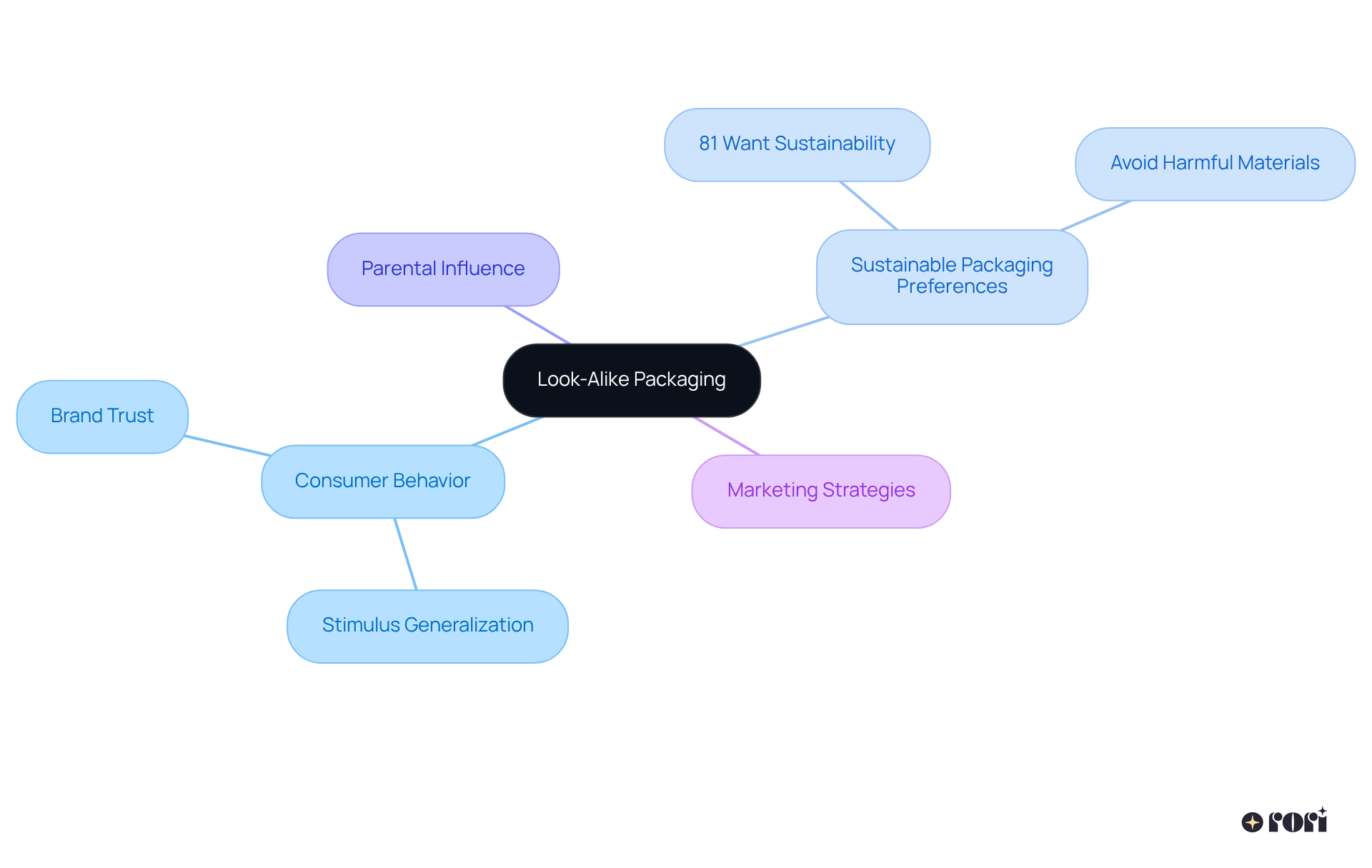
In football, players really need to read those defensive cues and adapt their responses based on what they've learned before. Think about it: when a quarterback spots a specific defensive formation, they can pull from their toolkit of strategies to react effectively. This knack for generalizing, as seen in a , isn't just a game-changer in sports; it's also super important in everyday life for kids. It helps them become adaptable and boosts their problem-solving skills, making it easier for them to tackle various challenges they face.
Studies show that athletes across different sports often develop sharper decision-making skills, highlighting just how vital adaptability is for children. Plus, insights from sports psychologists remind us that a stimulus generalization example aba, which involves the ability to transfer skills across different situations, is key to fostering resilience and creativity in young learners. And let’s not forget, by weaving technology into their training, athletes can really amp up their performance and skill transfer, making these lessons even more relevant to daily life. Let’s explore this together!
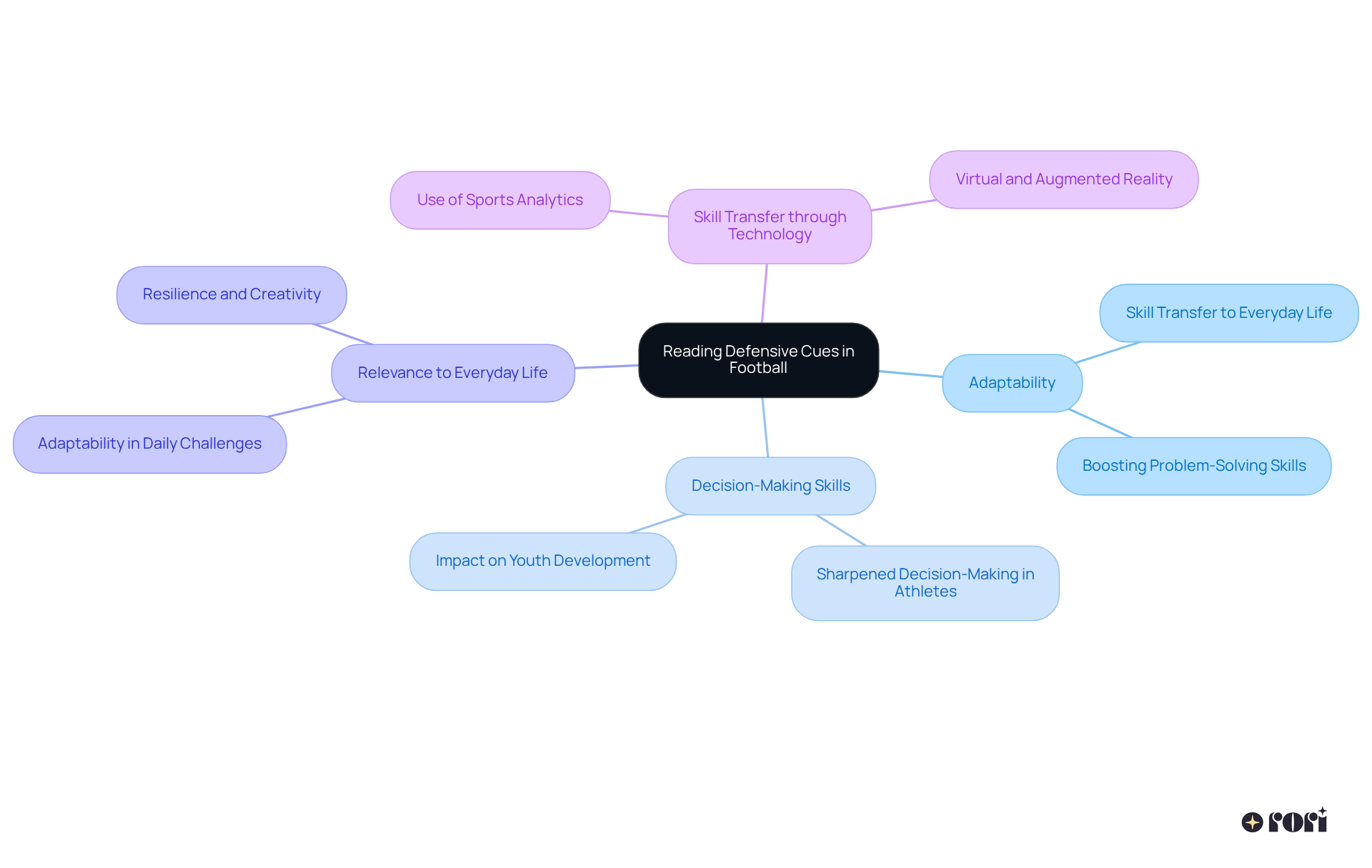
Food aversions can often pop up when a young person links a negative experience, like feeling sick, to a particular food. This connection can even spread to similar foods, providing a stimulus generalization example in ABA, which makes mealtime a bit tricky. To help their kids, parents can slowly reintroduce these foods in a supportive setting. Using strategies that create positive vibes and can make a big difference.
For instance, adding fun and interactive activities during meals can create a relaxed atmosphere. This encourages little ones to be more open to trying new foods. Nutritionists remind us that patience and consistency are key. An example of stimulus generalization in ABA is repeatedly exposing children to a food in a non-threatening way to help lessen those aversions over time.
Moreover, tackling any underlying fears or anxieties about eating can really boost a young person's willingness to explore different foods. By understanding the roots of these aversions and putting thoughtful strategies into play, parents can effectively support their children in overcoming food-related hurdles. Let’s explore this together and make mealtime a happier experience for everyone!
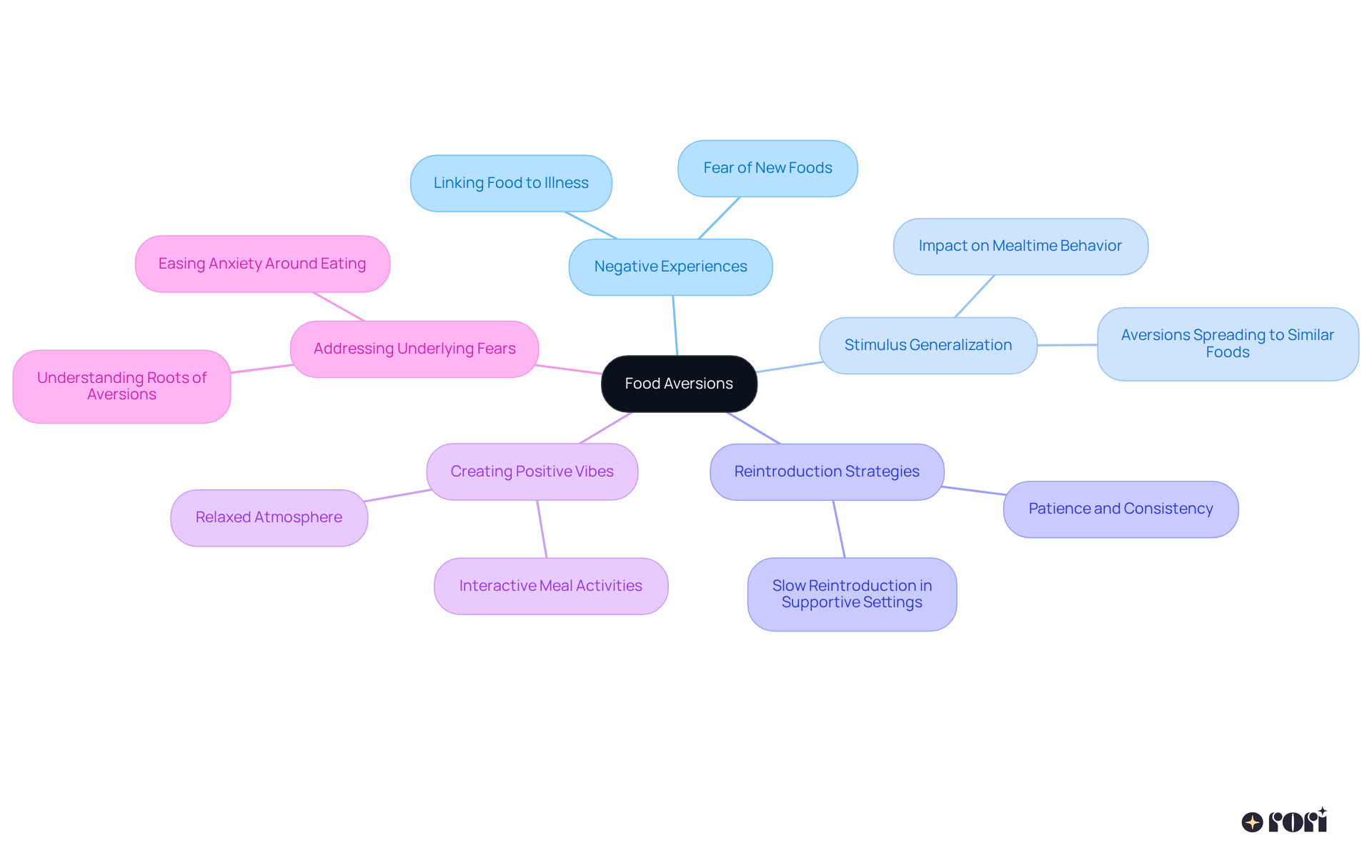
An effective stimulus generalization example aba in business is product line extensions, which tap into the principle of generalization by introducing new products under a familiar brand. This strategy plays on the comfort that consumers feel with a brand they know, encouraging them to check out new offerings. For parents, understanding this principle is key because it mirrors how children learn and adapt to different situations. When kids encounter brands they recognize, they're more likely to , which can really enhance their learning experiences.
This connection between brand awareness and children's behavior is a stimulus generalization example aba, demonstrating the importance of understanding generalization in everyday life. It helps parents support their children's development and learning in meaningful ways. At Rori Behavioral Innovations Inc., we empower parents through parent-led ABA solutions, allowing them to take an active role in their children's treatment. By incorporating AI-powered technologies, we make ABA treatment more effective, accessible, and personalized.
As a leading expert once said, 'Content builds relationships. Relationships are built on trust. Trust drives revenue.' This really highlights the importance of nurturing trust through recognizable brands, which can significantly impact young learners' education and behavior. Let’s explore this together and see how we can make a difference in our children's lives!
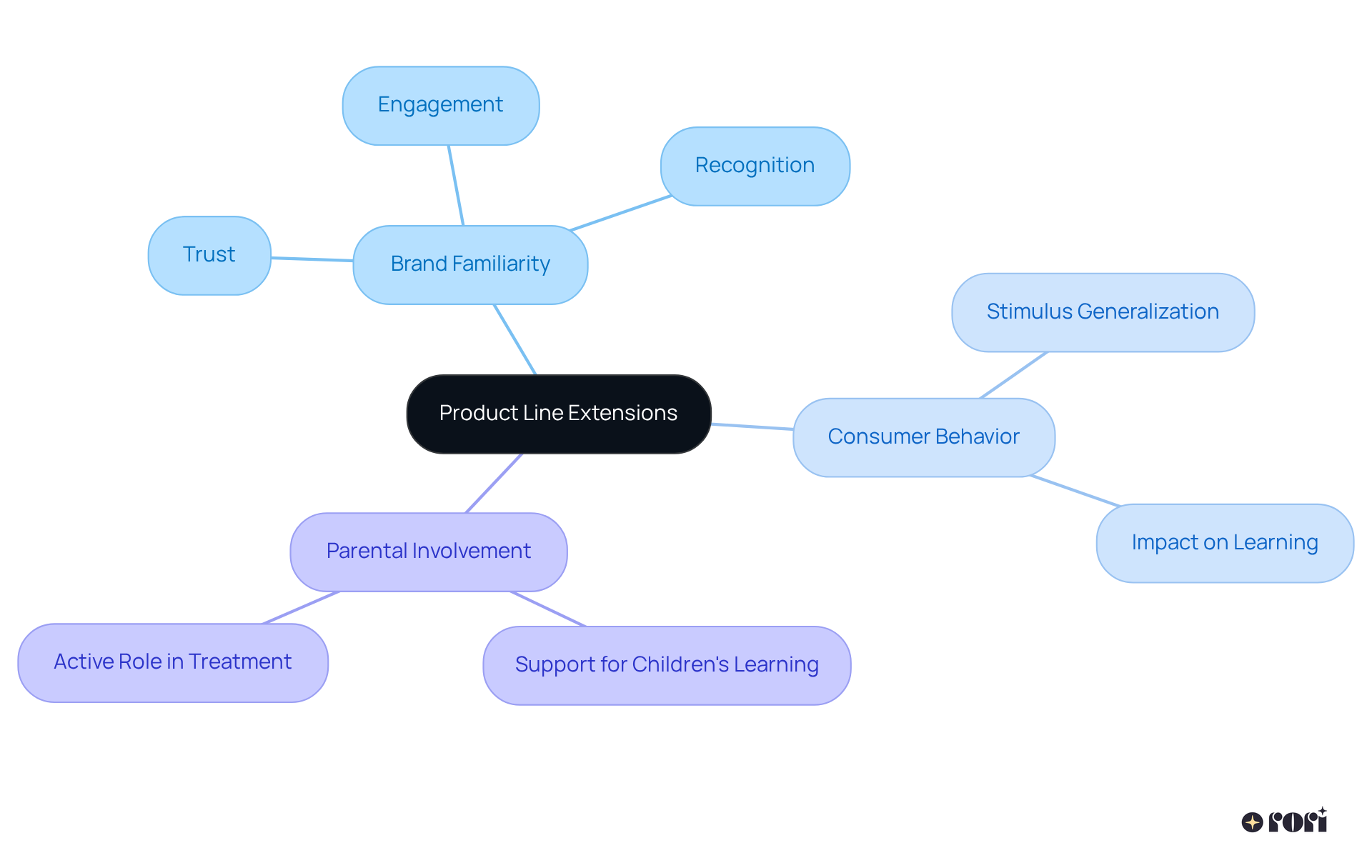
Play intervention is a fantastic way to help our kids grow and develop! When children engage in play, they can in a safe and fun environment. For instance, think about a child who learns the importance of sharing during a play session. They can then take that skill and use it with friends during playtime, reinforcing what they've learned in a natural setting. This approach not only strengthens their abilities but also enhances social interactions, making play intervention an invaluable tool for both parents and therapists.
As Virginia Axline wisely pointed out, diving into a child's play reveals their inner world, allowing therapists to support them in expressing and refining their skills. Plus, these play sessions inspire kids to explore and apply their skills in various situations, which is crucial for their emotional and social growth. Did you know that around 20% of young people face emotional, behavioral, or mental health challenges? This highlights just how important play intervention can be in addressing these issues.
Dr. Paris Goodyear-Brown emphasizes that 'play is the main language of a young person,' which showcases its role as a communication tool in therapy. And there's more! Bibliotherapy can be woven into play sessions, tailoring the approach to meet individual needs. Research shows that between 74% and 83% of children experience positive changes through play therapy, which really speaks to its effectiveness.
Parental involvement is key too! It significantly correlates with treatment success, so it's essential for parents to actively participate in their child's therapeutic journey. Let’s explore this together! Your engagement can make a world of difference!
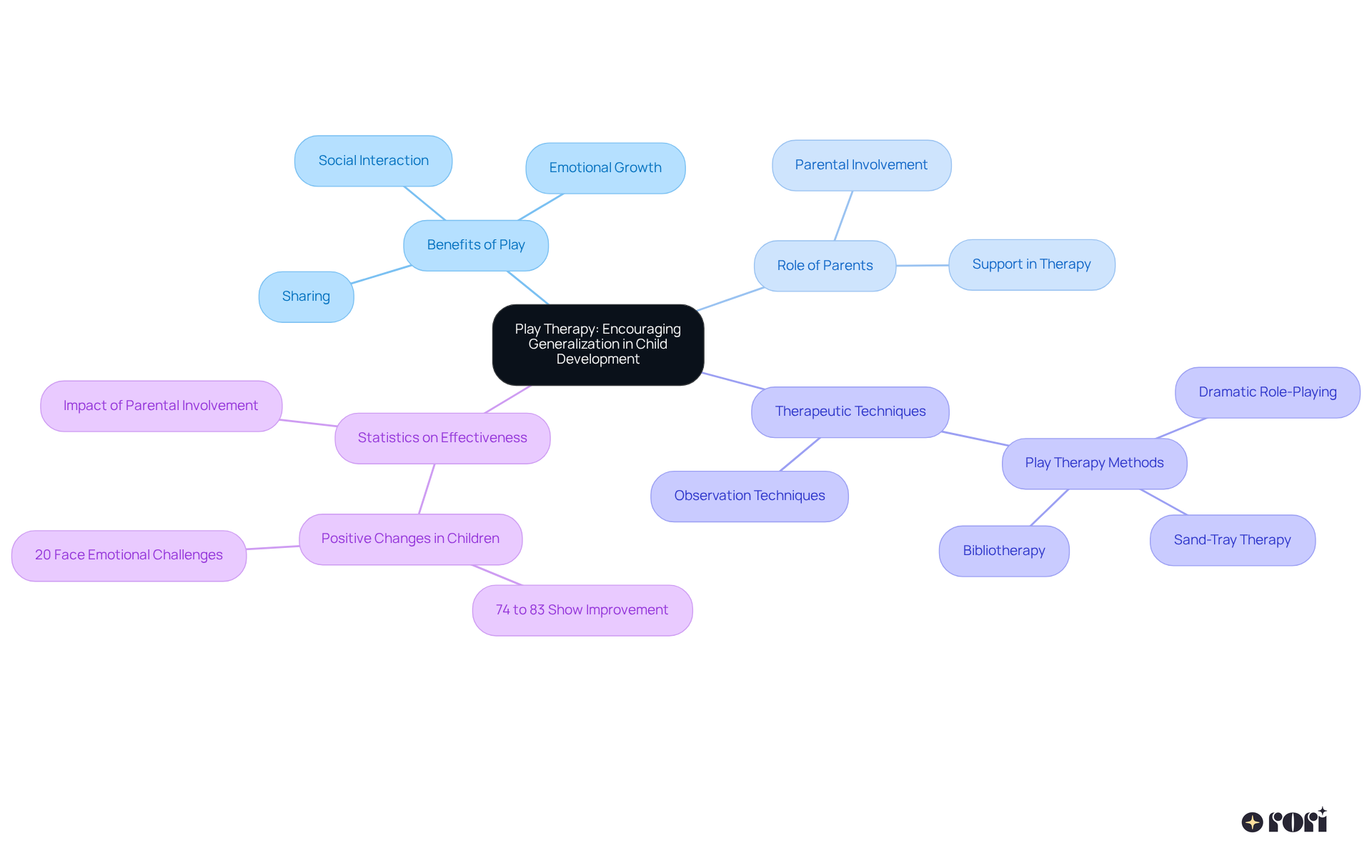
Understanding stimulus generalization in ABA therapy is essential for helping children with autism grow and become more independent. When children apply learned skills in different settings, they can handle everyday situations with confidence and ease. This adaptability not only improves their social interactions but also enriches their overall quality of life.
Throughout this article, we've explored key examples like the Little Albert experiment, Pavlov's dogs, and practical parenting strategies. These examples show how generalization works in various contexts. From emotional responses to everyday parenting techniques, the insights highlight the importance of creating supportive environments where children can practice and apply their skills. Each example reinforces that consistent practice and positive reinforcement are crucial for effective learning.
In conclusion, the importance of stimulus generalization goes beyond therapy sessions. It plays a vital role in helping children adapt and thrive in different situations. Parents and caregivers are encouraged to actively engage in this process, creating opportunities for their children to generalize skills in real-life contexts. By doing so, you not only support your child's development but also contribute to their journey toward independence and resilience. Let’s explore this together!
What is the main focus of Rori Care's ABA therapy?
Rori Care's ABA therapy focuses on stimulus generalization, helping children transfer learned skills to different settings, making it easier for them to use these abilities in everyday life.
Why is generalization important in ABA therapy?
Generalization is crucial in ABA therapy because it ensures that skills acquired during therapy can be applied not just in the clinic, but also at home and in the community, fostering independence and enhancing social interactions.
How does stimulus generalization improve the quality of life for individuals with autism?
Stimulus generalization improves the quality of life by helping individuals with autism become more adaptable and flexible, which are essential traits for thriving in social situations.
What is Natural Environment Training (NET)?
Natural Environment Training (NET) emphasizes learning through everyday activities, which enhances effective application strategies for skills learned in therapy.
What does the Little Albert experiment illustrate about emotional responses?
The Little Albert experiment illustrates how learned behaviors, such as fear, can generalize to similar stimuli, highlighting the importance of managing emotional reactions in children undergoing ABA treatment.
How can parents support their children in applying learned skills in different situations?
Parents can support their children by fostering positive emotional experiences during therapy and creating opportunities for practice in various environments, enhancing the effectiveness of ABA interventions.
What does Pavlov's dogs experiment teach us about stimulus generalization?
Pavlov's dogs experiment teaches us that behaviors can extend to related stimuli, demonstrating the importance of helping children respond appropriately to different signals through stimulus generalization in ABA.
How can parents help their children become more independent and flexible?
Parents can help their children become more independent and flexible by encouraging them to practice their skills in different settings, reinforcing the application of learned abilities in everyday routines.